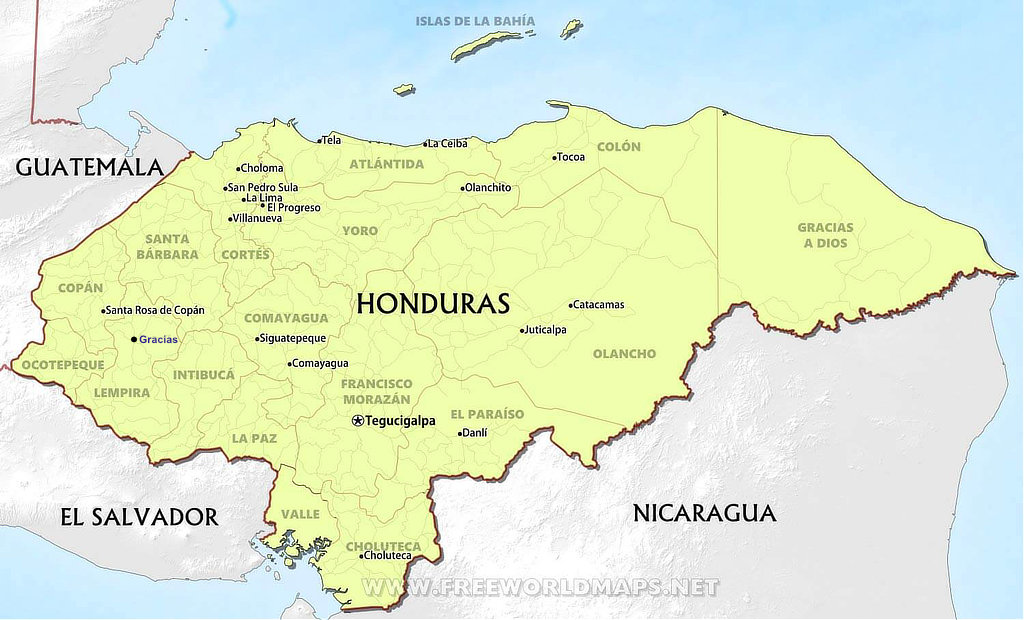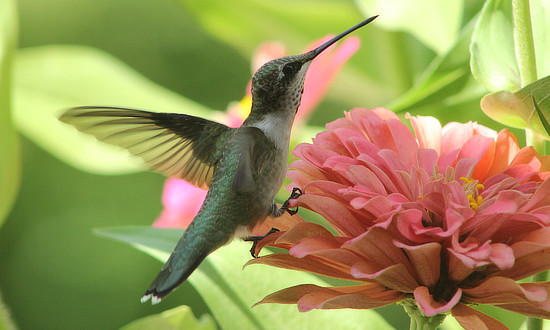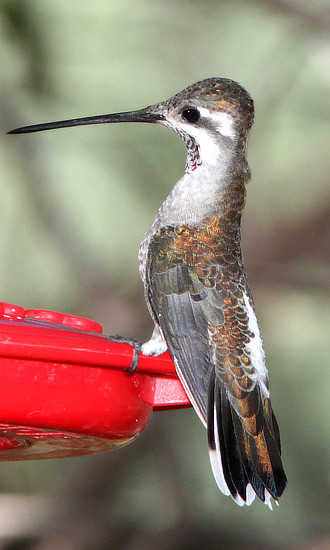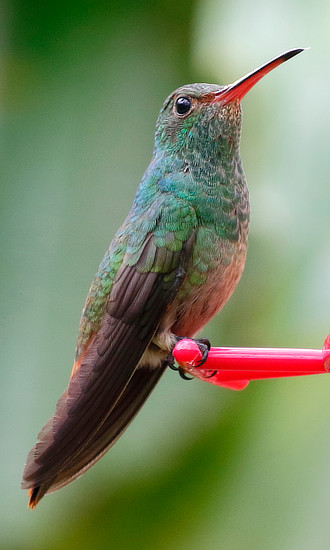Hummingbirds of Honduras
Many people travel to Honduras for hiking, scuba diving, photography, mission work and ... hummingbirds!
About Honduras
 Map showing the location of Honduras in Central America |
The Republic of Honduras is located in Central America, north of Nicaragua and adjacent to Guatemala and El Salvador. The country borders the Caribbean Sea on the East, and the Pacific Ocean at the Gulf of Fonseca on the west. Its capital and largest city is Tegucigalpa, and the population of the country is over 10,000,000 residents.
The climate is hot and humid most of the year; the spring is dry. Hurricanes can affect Honduras from June through November. The geography consists mainly of mountains, with narrow plains along the coasts. Other features include large rain forests, cloud forests, savannas, mangroves, and the Mesoamerican Barrier Reef System.
The Honduras government consists of 18 departments (states), each of which are further divided into municipalities (counties). Each municipality has cities, villages and hamlets. For example the Lempira Department has 28 municipalities and 32 major cities, with the Department capital being Gracias. Included in the Bay Islands Department is the island of Roatán, located about 40 miles off the northern coast; the departmental capital is Coxen Hole.
The country hosts 20 national parks, including Celaque National Park in Lempira, Ocotepeque and Copán, in western Honduras. The park includes Honduras’ tallest peak, Cerro Las Minas or Pico Celaque, which towers to 2,870 meters (9,416 ft) above mean sea level.
Celaque National Park is located just to the west of the rural mountain town of Gracias, Lempira ... the natural beauty of this area draws many visitors, offering welcoming hot springs, extensive hiking trails, and tours of nearby farms and historic ruins.
Map of Honduras, Departments and Major Cities
 |
| Map courtesy of www.FreeWorldMaps.net |
The Family of Hummingbirds
_(2495402213).jpg) Honduran Emerald Hummingbird Dominic Sherony, CC BY-SA 2.0, via Wikimedia Commons |
Hummingbirds are found only in the Western Hemisphere, with almost half the species living in the "equatorial belt" between 10 degrees north and south of the equator. Many are found in Honduras, which is located about 1,000 miles north of the equator. The hummingbird family is very large, with 366 species and 112 genera, mostly south of the United States.
Hummingbirds comprise the family Trochilidae, among the smallest of birds, with most species measuring in the 3"-5" range.
Many hummingbirds in Honduras never migrate, while some migrate north to their breeding grounds in the southern U.S. as early as February, and to areas further north later in the spring. Migrants from Honduras include the Ruby-throated Hummingbird which is a popular bird in the United States and Canada from February through October.
Hummingbird Species in Honduras
Honduras is home to over 700 species of birds, including 42 species of hummingbirds.
The Honduran Emerald (Amazilia luciae) is a vulnerable species of hummingbird in the "emeralds" tribe, Trochilini, of the subfamily Trochilinae. It is endemic to Honduras, and is found in three widely separated areas of northern Honduras, in the departments of Santa Bárbara, Cortés, Yoro, and Olancho. Its habitat is disappearing because of deforestation.
Other hummingbird species that are found in Honduras include, but are not limited, to the following:
|
|
Photo Highlights of Hummingbirds Found in Honduras
Purple-throated Mountain-gem |
Violet Sabrewing |
Buff-bellied |
|
Green-breasted Mango |
White-necked Jacobin |
Mexican Violetear |
|
Ruby-throated  |
Purple-crowned Fairy |
Berylline  |
|
White-eared  |
Rivoli's |
Plain-capped Starthroat |
|
Long-billed Hermit |
Cinnamon |
Stripe-throated Hermit |
|
Rufous-tailed  |
|||
| Special thanks go out to the great nature photographers Alan Schmierer and Rolf Riethof for sharing many of their beautiful public-domain photographs of hummingbirds on this website via Flickr. | |||
Hummingbird Resources Related to Honduras
- Birding in the Real Honduras
- Honduran Emerald (eBird)
- Honduran Emerald (American Bird Conservancy)
- Central American Hummingbirds: Gems of the Region
- Hummingbird Species of Central America (Wikipedia)
Honduras Travel Resources
- Honduras Travel at TripAdvisor
- Honduras Travel
- Honduras at Lonely Planet
- Roatan Tourism
- Honduras Travel Guide at Expedia
- Top Honduras Travel & Transportation Services at Viator
